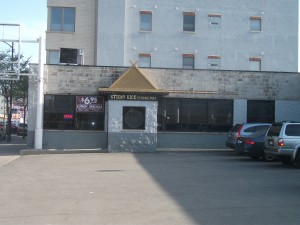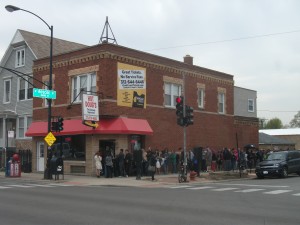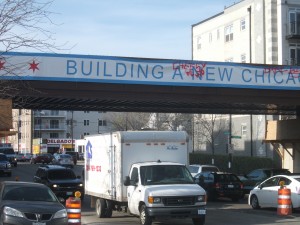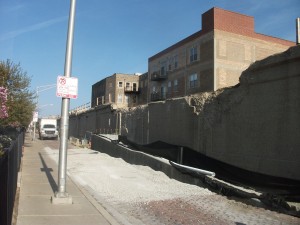As a young man from a blue-collar family, I partially worked my way through college during the summers at a chemical company near Cleveland that employed my father as a truck mechanic. If there is one thing I learned at the time, it was the value of safety and industrial hygiene. The first summer I was there, we college students were rotated through various departments to fill in for men on vacation. One produced cuprous chloride, where I learned that not keeping a gas mask on would quickly make you dead. Others produced chemicals that produced itches and rashes if you were not careful, and in one I fractured my left ankle when an antimony kiln tipped over. I could go on, but the point is simple: Safety matters.
That theme, however, does not yet seem to be official gospel in Texas. I don’t want to issue a blanket indictment here, because I know some state officials probably want things to be different, but they don’t seem to hold the reins of power. Those who do hold those reins prefer a state that boldly advertises its lack of regulations. They see them as impediments to attracting business. The fact that enlightened businesses have often supported environmental, safety, and public health reforms seems not to affect their point of view.
I am offering this perspective now because the Texas State Fire Marshal’s Office in the past week released a long-awaited Firefighter Fatality Investigation, which it was legally required to produce, and issued a number of recommendations for improvements that could save lives in the future. The study was the result of the explosion in a fertilizer storage facility in West, Texas, on April 17, 2013.
Earlier this spring, I was asked to serve on an expert panel on planning and land use for the Chemical Safety and Hazard Investigation Board (CSB), a federal agency created in 1999 to investigate chemical and hazards materials accidents. It was one of two panels organized for a hearing in West, Texas, on April 22, a little more than one year after the incident in which a fertilizer storage facility exploded, killing 15 people, two-thirds of them fire fighters. The explosive material was ammonium nitrate, which has a history of such accidents and was also the material used by Timothy McVeigh in the bombing of the Murrah Federal Office Building in Oklahoma City in 1995. The CSB is still working on a report documenting its findings about the incident in West, and I do not wish to comment on or explore the issues that require more technical and scientific investigation to determine precisely what happened.
But there are issues about which I learned that I find troubling on the surface, even without the help of that ongoing investigation. For one, Texas law prohibits counties of fewer than 250,000 residents, unless they are adjacent to a county of 250,000 or more, from adopting a fire code. This is somewhat in line with the fact that Texas also has never bestowed zoning authority on its counties, rendering them powerless to influence land use outside incorporated municipalities (which have their own authority). This was one subject of inquiry by the board at the evening hearing, which lasted four hours, but even the state fire marshal, sitting just to my left on the same panel, could offer no explanation for the origins or rationale of that prohibition. He merely indicated at one point that obviously, as a fire marshal, he would rather not see such restrictions. Nonetheless, over the past year since the explosion, and despite ongoing investigation of such issues by the Dallas Morning-News, there is no sign of movement from Gov. Rick Perry’s office on changing the law. There are indications from Lt. Gov. David Dewhurst, who apparently prefers a different approach. Good for him. And for St. Rep. Joe Pickett of El Paso, who chairs the Texas House Committee on Homeland Security and Public Safety, who also favors reexamining such issues.
The issue is not simply the usual question of unfunded (or even funded) state mandates. I have followed state planning legislation for years, and about half require local communities to prepare comprehensive plans (also known as master or general plans), to one degree or another, sometimes distinguishing on the basis of community size or some other factor. About ten of those, in one form or another, require communities to include in those plans an element addressing natural or other hazards. The rest of the states have permissive legislation, which grants local governments the authority to undertake planning and zoning without requiring it. It is easy enough to understand why some states are more reluctant than others to impose such a mandate, and similar distinctions between mandating and permitting apply to issues like building and fire codes. What is hard to justify, however, unless one believes in libertarianism run amok, is actually prohibiting such regulation at the local level or denying such authority. In fact, only Texas, to my knowledge, has in place the prohibitions I have described. And I simply do not understand why a state sees it in the public interest to bar counties, in this instance, from adopting safety codes with regard to fire prevention. Whose interests are served by this?
It turns out that McLennan County, where West is located, and whose county seat is Waco, does not have a fire code. Moreover, the fire fighters who died had not been trained in the handling of ammonium nitrate, a substance with a notorious history of unpredictable behavior. The hearing included discussion of the need for more and better research on that point, and for better understanding of this chemical’s behavior, in order to prevent future incidents like the explosion in West. All of that is wise and appropriate.
But there are things the state of Texas can fix now, if only it moved beyond its regulatory myopia to see the larger public safety issues that transcend the simplistic notion that regulation necessarily inhibits job creation. That is a dubious premise in any event, but it also begs the question of what price must be paid to create jobs when brave men like the volunteer fire fighters who responded to the blaze in West must pay the ultimate price just to satisfy such ideological predilections. And what jobs remain at West Fertilizer now? The event is a major setback to economic development in a small town like West, and it will take time to heal.
The Fire Marshal’s report includes some recommendations and conclusions that I find perfectly sensible. It notes, for one thing, that Texas has not adopted minimum training standards for volunteer fire departments. That alone would not be a bad place to start, along with the need for local fire codes. The report states, “The Texas Legislature should consider allowing all counties to adopt a fire code.” The report also notes the lack of a local plan to address hazardous materials, noting that standard procedure for residential or even most industrial incidents is inadequate for dealing with a facility like West Fertilizer.
Let me close by adding that West, judging from my admittedly brief visit, is a pleasant town that deserves better. I learned from a building sign next to the hearing site that West was the hometown of Scott Podsednik, an All-Star member of the 2005 Chicago White Sox team that won the World Series. It has an interesting Czech heritage that caused several people to urge me to visit the Czech Stop, a bakery just off northbound I-35 that sells what I now consider the best kolaches anywhere, as well as a very nice, engaging staff. And it has a mayor, Tommy Muska, who is banging on doors in Austin for answers to some of these urgent questions. I hope he and his town find some. At least then, the destruction of dozens of nearby homes, schools, and a nursing home will not have been in vain.
Jim Schwab





